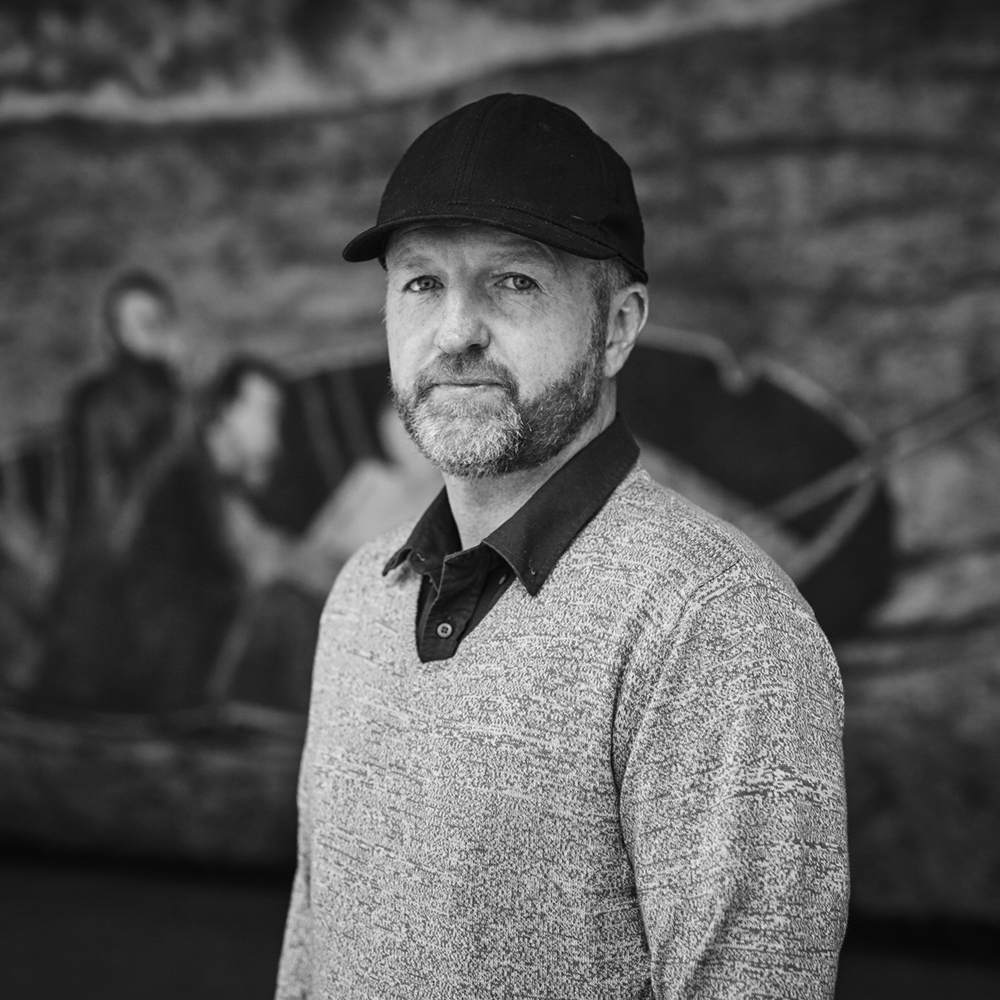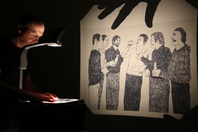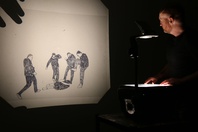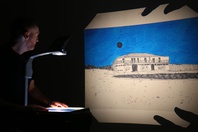Richard Lewer
Melbourne
2017
Displayed 2017 at Carriageworks

Richard Lewer
Born 1970, Hamilton, New Zealand. Lives and works Melbourne
Richard Lewer is known for his video and animation, paintings and delicate drawings, which evocatively rework some of life’s less-pleasant elements – crime scenes, illness, horror movies and extreme events. His work is accessible and familiar, with a critical edge that probes what is beautiful and sinister about our society without injecting a moralising tone or political message. Lewer’s focus is, however, less concerned with telling the concrete facts of a case; instead, his work explores the way that places can become repositories for the psychic residue of extreme events, painful activities or our deepest fears.
Artist text
by Lisa Slade
a concrete floor
a cell door
and John Pat (1)
So goes the refrain of the 1988 poetic lament written by Jack Davis for John Pat, a 16-year-old Yindjibarndi teenager who died on 28 September 1983 in Roebourne, Western Australia. Pat died as a result of a brawl involving off-duty policemen and a group of young Aboriginal people in the town’s main street. The policemen were charged with manslaughter but subsequently acquitted by an all-white jury. Autopsies revealed that Pat was subjected to at least ten blows to his head, causing a fractured skull, haemorrhaging, swelling, bruising and tearing of the brain. The incendiary force of John Pat’s death in police custody ignited the demand for a Royal Commission into Aboriginal Deaths in Custody (1987–91).
On the 30th anniversary of Pat’s death, Richard Lewer, who was at the time living in Fremantle, made a painting titled Remembering John Pat (2013). In the painting, a chorus of angels take carriage of Pat’s body, separating him from his grieving family. ‘ICE’ is spelled out on the building behind the scene, a direct reference to the Victoria Hotel, the site of the incident. The dotted rhythm of spinifex contours the composition and the choice of steel as painting surface signals that this is the Pilbara, iron country. Lewer made the painting, a eulogy in oil and steel, at a time when he was interrogating Western Australia’s culture of fly-in fly-out workers and the mirage of wealth occasioned by a new chapter of colonisation. He was also probing earlier moments in the dark history of the Pilbara, including one of the country’s worst massacres, known as the Flying Foam massacre, where a large number of Yaburara women, children and men were slaughtered along the coast of the Burrup Peninsula in 1868. From personal stories to national events, Lewer has unflinchingly probed our fraught and unconscionable histories.
In August 2016 Lewer returned to Roebourne to meet John Pat’s mother, Mavis Pat, and other members of the family. Lewer spent time with the family, experiencing firsthand their grief and anger – emotions heightened by the knowledge that, even today, approximately 40% of the West Australian prison population is Aboriginal. (2) Lewer’s reluctant ethnography (he is a self-effacing and humble human) has resulted in a series of recordings that take the form of drawing, arguably the most direct and democratising art medium for an artist who is a master of many materials.
According to Lewer, drawing saved his life, liberating him from anxiety and depression. As such, drawing promises catharsis – for himself, for us the audience, and particularly for Pat’s family. Animated as moving images, the drawings tell the story of John Pat from the perspective of his mother, Mavis. Lewer himself is ever-present in the unfolding horror – he assumes the role of narrator and, in doing so, makes himself, and by extension all of us, complicit in this history. In the work we see him standing by an overhead projector, manipulating the drawings and recounting the tragedy. He summons the Victoria Hotel; Mavis Pat; the prison cell where her son was incarcerated; and even the grave of John Pat, marked with the prophetic words ‘Shall never be forgotten’. Through this work, Lewer ensures that this is so.
Notes
(1) See Jack Davis, John Pat and other poems, Dent, Melbourne, 1988.
(2) See Lucy Martin, ‘Derby’s West Kimberley Regional Prison hailed as game changer for Aboriginal incarceration rates’, ABC News, 2 May 2014, www.abc.net.au/news/2014-05-02/derby-prison-hailed-as-game-changer-indigenous-incarceration/5426036?pfmredir=sm.
Test





